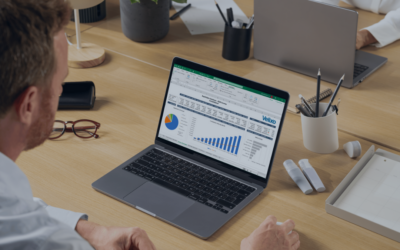Gathering data and making use of it has been a top priority at many businesses for several years now. By gathering actionable data in dynamic and efficient ways, BI allows users to access the insights they need to drive smarter decisions. Instead of standalone BI solutions, however, more business leaders are turning to ERP. The leading ERPs of today feature BI offerings that deliver as much punch as standalone tools. Why do business leaders love cloud ERP? What are benefits of business intelligence in ERP? Let’s look and see how BI and ERP can deliver key data for actionable insights at your company.
Cloud ERP is scalable… and self-service
One of the enormous benefits of BI in ERP is its scalability. Detail-oriented, customizable and scalable analytics should not be limited to enterprise solutions. The best ERP can provide you with self-service analytics that adapt to your needs, reducing cost, complexity and security risks. Additionally, it can grow with you as you learn to use BI data in better and more effective ways.
It’s more secure than ever
Leveraging data is great, but with all data comes security concerns. Users can rest assured, however, that their data is secure with the ERP approach. Data loss prevention and sensitivity classification in the BI component of an ERP help keep your data is safe and accessible only to the people you want to have access.
BI and cloud ERP provide detailed insights into customer behavior
It’s widely known that BI provides insightful data for consumer trends. When working in tandem with cloud-based ERP solutions, BI gets even more dialed into trends and forecasts, delivering real-time data. So, users can, for example, view up-to-the-minute sales performance and data gleaned from across a company’s various departments. Rather than getting bits and pieces, decision makers get the complete picture for more precise decision making.
BI and cloud ERP help data make sense
Data is only valuable if you know what you’re looking at. Today’s BI tools in many cloud ERPs take a visual approach, using graphs, visuals, and tables to better explain and present data. It creates a shared language that everyone from an accountant to marketing guru can understand. No one has to translate data. So, it’s easier to build consensus, track performance, and drive decisions.
BI and cloud ERP save you time
Compiling and parsing data takes time, time key decision makers could spend on more important tasks. But BI and ERP make this faster. They deliver user-friendly and timely metrics to your leaders when they need it. Projects will get from development to production and market that much quicker.
BI and cloud ERP create a “best of both worlds” scenario for businesses. If you have been using a standalone BI, consider what BI and cloud ERP can do for you. Do you have insights into the benefits of business intelligence in ERP? Let us know in the comments below.



